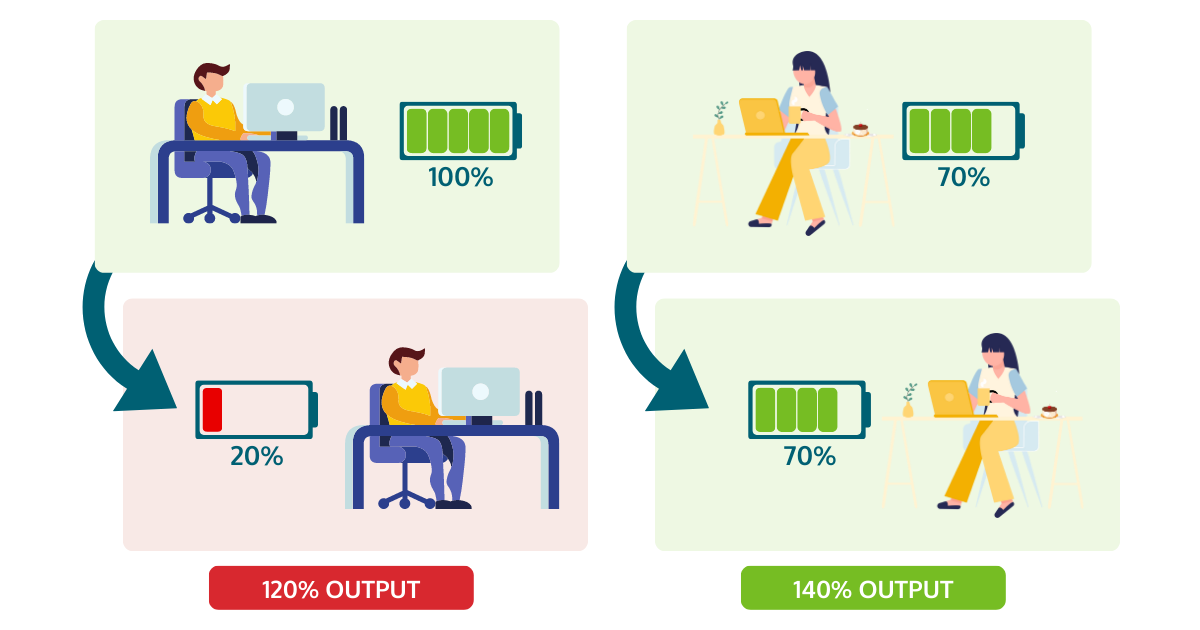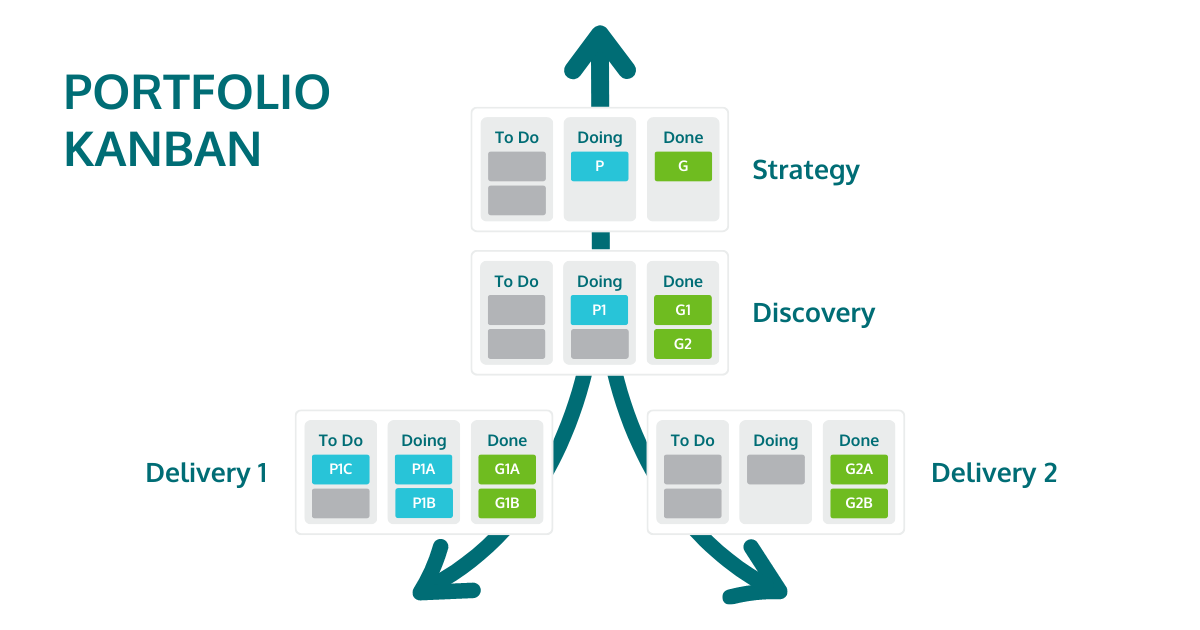Arguing in favor of productivity hardly counts as controversial or innovative. For most business leaders, it’s about the easiest win there is; the more, the better! After all, who’s going to argue against productivity?
There’s just one problem: the deceptively simple appeal of a never-ending battle for productivity can have real drawbacks like burnout, hostile work environments, and misplaced focus.
The root of these issues lies in the approach. Too often, we view employee productivity as akin to someone trying to improve their car’s performance by flooring it at all times. It’s a drive for short-term value creation at the expense of long-term performance.
By contrast, real sustained productivity gains come from providing balanced support, guidance, and simply following the mantra of working smarter, not harder. But what actions can you take to achieve these kinds of sustained employee productivity improvements? We’ve broken it down into 5 tactics you can use, along with an overarching approach to tie them all together.
Change How You Think About Employee Productivity
As hinted at above, actually improving productivity in a sustainable way starts with changing your mindset around it.
You want to avoid viewing employee productivity through an extraction lens, wondering how to get the most output with the least input. This approach often leads to short-term actions which overburden employees.
Essentially, if you try and get people to operate at 100% capacity as often as possible, you’ll get burnout and poorer long-term performance. That’s not to mention higher turnover rates as well. You can think of it as a simple math problem if 100% capacity in one month leads to 20% for the next months that’s worse than operating at 70% for both months.

Instead, set up systems for gauging how close to capacity employees are and try to ensure they stay around that 70% mark. This can be achieved by simply asking everyone to estimate the capacity they think will be used during a set period of planned work.
The result is more balanced workloads and employees who have spare capacity both for their own health and well-being and to address any emergencies that may arise.
Tie Work to Broader Goals
It’s easier to do work when you understand why it’s being done.
This is one of those things many of us intrinsically understand. For example, compare how motivated and productive you might be if you were asked to help build a house “because I said so” relative to being told the house was for homeless veterans. In the former scenario, you’d probably be annoyed and resentful, while in the latter, you’re likely to feel much better about doing the exact same tasks.
And yet, despite how clear it is that linking work to broader goals enhances productivity, this still gets neglected. Or, managers may believe that simply mentioning that a particular task or project will help the company achieve its goals is sufficient. Frankly, if this is the approach in your organization, it’s easy to simply forget to mention the connection at all.
That’s where tools like Kanban boards become particularly useful. By connecting cards representing tasks, projects, and initiatives, etc., you can formalize precisely how work on the individual level contributes to broader organizational goals. This can be done ad hoc or through an approach like Portfolio Kanban.

All of this is far easier when using Agile methods. For example, the latest State of Agile Marketing Report found that 62% of Agile marketers felt it was easier to connect their daily activities to corporate strategy and objectives.
Still, you can do an amazing job of connecting your organization’s OKRs or KPIs to the work your employees do, but if those aren’t the right goals to begin with, then you may still face problems. That is why feedback is so vital.
Ask for and Test Feedback Regularly
If employees are more productive when they understand what broader goals they’re contributing to, that goes double when they know they’re contributing to the right goals.
Fortunately, by regularly getting feedback from teams, you can both make them feel their voices are being heard and gather genuinely useful information for improving your organizational goals. It’s how you can gather more quality ideas you can then put to the test. It’s also how you keep your finger on the pulse of your organization.
A useful way of thinking about this process is that leadership provides the “what” while teams provide the “how”. This ensures that teams have the freedom and flexibility to use their on-the-ground knowledge to find the best way to achieve their goals while still providing structure and guidance.
If you’re not listening to teams about their experiences and empowering them to solve problems using their knowledge, you’re going to lose out on employee productivity.
Remove Silos and Blockages
Chances are many of your employees lose a lot of time and productivity waiting on access to information, feedback, or information on the next priority. Beyond the basic time wasted, this is extremely demotivating as it generates frustration and even disillusionment with the way work is being managed.
The best way to address these kinds of silos is from the top, by uniting teams and departments around the goals mentioned in the previous section. However, breaking down silos goes beyond simply getting everyone to move in the same direction. Often, silos manifest in simpler things like not having easy access to information.
It’s here that visualization tools like boards connected with Kanban or Scrum can have a great impact. By creating cards that act as single points of contact on tasks or projects, it’s easier to simply list all relevant documents, questions, comments, and other information there. Facilitating collaboration this way goes a long way toward making the entire organization more efficient.
The result is that employees can be more productive by spending less time searching for information or wondering what the next priority should be. You end up with productive employees who, just as importantly, feel empowered and unencumbered to do their work and do it well.
Involve Stakeholders
The final tactic you should be employing to improve employee productivity is to give stakeholders more regular involvement in relevant decisions.
Okay, but what does that look like in practice, and how does it relate to productivity?
Whether you’re talking about internal or external stakeholders, the problem lies in waiting until a project is at an advanced stage, or even finished, before presenting it. This results in lots of work being put into something that may no longer meet the stakeholder’s requirements.
By contrast, getting regular feedback from those stakeholders helps ensure the projects evolve with them and meet their needs. By avoiding unnecessary work and providing greater value to your stakeholders, your employees and entire organization can become more productive.

This ties back to changing your mindset around productivity. Instead of working to help employees simply do more work, ensuring they’re doing work that actually creates value is a way to improve productivity on its own.
What Ties These 5 Tactics Together? Business Agility
While you can try each of the 5 tactics listed here individually, it’s far easier to attempt them together because each is a part of the Agile approach to business. Built around core values like transparency and a laser-like focus on creating stakeholder value, it’s an approach that has long been improving productivity in teams and organizations doing everything from software development to medical research.
Unlocking all of these Agile benefits to improve employee productivity begins with understanding the fundamentals of business Agility. We have both self-paced and instructor-led courses that will equip you or other leaders in your organization with the knowledge needed to begin an Agile journey.